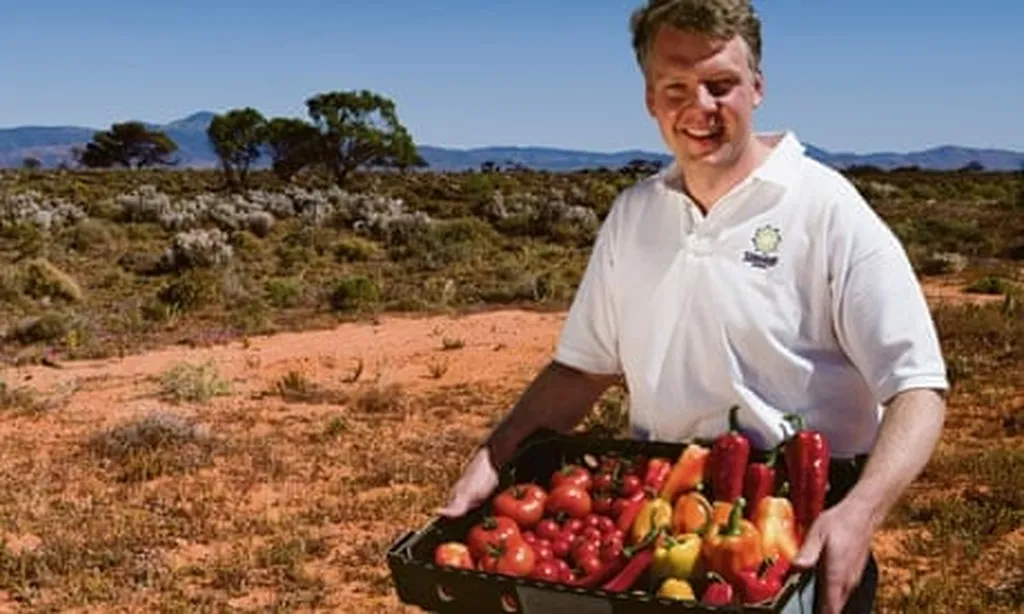Qatar is reinforcing its commitment to food security through a blend of agricultural innovation and sustainable production, with Hassad Food Company leading the charge. The state-backed agribusiness investor has unveiled two experimental projects that could redefine how the country grows food in its arid climate—using humidity-based irrigation and advanced greenhouse technologies to extend growing seasons and boost yields.
At the heart of these efforts is a pilot project testing a Korean-developed greenhouse covering material designed to lower internal temperatures. Traditional greenhouses in Qatar’s harsh climate often struggle with excessive heat, limiting production to just four or five months a year. The new material, currently under evaluation with real-time sensors tracking air and soil conditions, aims to stretch that window significantly. “We expect the growing period to last much longer,” said Mubarak Rashid Al-Sahuti, Hassad Food’s Chief Communication & Commercial Affairs Officer, in a recent interview with Qatar TV. If successful, the technology could help Qatar overcome one of its biggest agricultural hurdles: the relentless summer heat that stifles crop growth.
Alongside temperature control, Hassad Food is pioneering a closed-loop system for leafy vegetable production that relies entirely on atmospheric humidity for irrigation. Developed in partnership with a Qatari research center, the project uses specialized machines to extract moisture from the air, eliminating the need for traditional water sources. The result is a pesticide-free, resource-efficient method that yields between 50 to 100 kilograms of greens per square meter every nine weeks—all managed through digital controls accessible via tablets. “These leafy greens are literally grown from humidity in the air,” Al-Sahuti explained, highlighting the system’s sustainability. Roughly 30% of the project’s energy comes from solar power, aligning with Qatar National Vision 2030’s emphasis on environmental stewardship.
The implications of these innovations extend beyond higher yields. By reducing reliance on imported water and conventional irrigation, Qatar is addressing two critical challenges: water scarcity and the carbon footprint of food production. The humidity-based system, in particular, offers a blueprint for other arid nations seeking to grow fresh produce without straining limited water reserves. Meanwhile, the temperature-regulating greenhouses could make year-round cultivation feasible, reducing dependence on seasonal imports for certain crops.
Yet Hassad Food’s strategy doesn’t stop at production. Storage and supply chain resilience are equally vital to Qatar’s food security framework. The company has established 25 state-of-the-art grain storage facilities across the country, with a combined capacity of over 320,000 tons of wheat and barley—dubbed “the golden grains.” These facilities, built by Qatari engineers, employ advanced aeration and monitoring systems to preserve grain quality during long-term storage. “Food security means ensuring food is always available, regardless of global disruptions,” Al-Sahuti noted. With these reserves, Qatar can weather supply chain shocks, from geopolitical tensions to climate-induced shortages.
The broader context of these advancements is Qatar’s evolution from self-sufficiency in key sectors—like poultry and dairy—to a more holistic approach to food security. While the country has achieved seasonal self-sufficiency in several vegetables, true resilience requires diversification: local production, strategic imports, and robust storage. Hassad Food’s projects reflect this multi-pronged strategy, blending high-tech agriculture with infrastructure investments to safeguard Qatar’s food supply.
For a nation where less than 1% of the land is arable, these innovations are more than experimental—they’re necessary. By harnessing renewable energy, optimizing water use, and leveraging digital agriculture, Qatar is not just growing food; it’s future-proofing its ability to feed its population. As Al-Sahuti put it, the goal is no longer just self-sufficiency but “true food security”—where supply chains are stable, production is sustainable, and innovation turns climatic limitations into opportunities.

